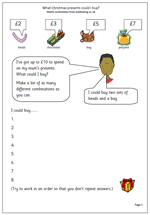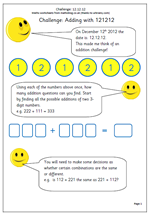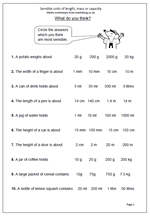 Knowing how much I like anything mathematical to do with dates, those kind people at urbrainy.com have let me publish a nifty little investigation to introduce the new year of 2013.
Knowing how much I like anything mathematical to do with dates, those kind people at urbrainy.com have let me publish a nifty little investigation to introduce the new year of 2013.
It is a simple idea; how many different addition questions can you find by just using the four digits, 2013.
At first it would be a good idea to look at adding two single digit numbers. Then there are the possibilities of adding a 2-digit number to a single digit; then adding two 2-digit numbers, and so on.
This is good practice at addition as well as encouraging logical thinking and presenting results in a well ordered, methodical way.
There are plenty of extension ideas with this investigation. For example the digits could be used twice, or the numbers could be multiplied rather than added, or even a mixture of the two
e.g. 2 x 0 + 1 = or 2 x 1 + 0 =
Subtraction could also be used, which might well lead on to negative numbers.
This page can be found in the year 3, Using and Understanding Maths category.


